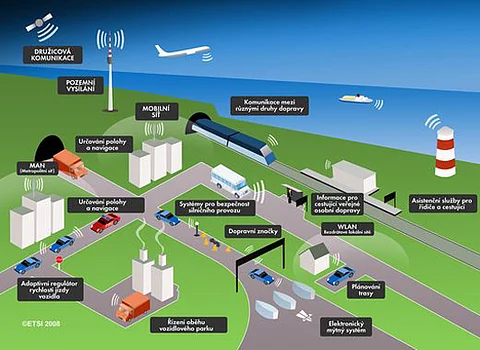
- Home
- Live Blog
- Breaking News
- Top Headlines
- Cities
- NE News
- Sentinel Media
- Sports
- Education
- Jobs

Dr. Mukul Chandra Bora
Dr. Mukul Chandra Bora, currently working as State Project Administrator of State Project Implementation Unit – North East (A unit of MHRD in Technical Education Quality Improvement Programme, Government of India). He is presently on deputation from the Post of Director, Dibrugarh University Institute of Engineering and Technology DUIET), Dibrugarh University.)
PART-III
Contd. from yesterday...
Given the wide range of intelligent transportation systems, it is useful to organize discussion of ITS applications through a taxonomy that arranges them by their primary functional intent. While this list is not inclusive of all possible ITS applications, it includes the most prominent ones, which are the focus of this report. ITS applications can be grouped within five primary categories:
The embedded Geo Positioning System (GPS) receivers in vehicles on-board units (OBU), a common term for telematics devices receive signals from several different satellites to calculate the vehicle’s position. This requires line of sight to satellites, which can inhibit use of GPS in downtown settings due to ‘urban canyon’ effects. Location can usually be determined to within ten metres. GPS is the core technology behind many in-vehicle navigation and route guidance systems.
The Dedicated Short Range Communications (DSRC) is a short-to-medium-range wireless communication channel, operating in the 5.8 or 5.9GHz wireless spectrum, specifically designed for automotive uses. Critically, DSRC enables two-way wireless communications between the vehicle (through embedded tags or sensors) and roadside equipment (RSE). DSRC is a key enabling technology for many intelligent transportation systems, including vehicle-to-infrastructure integration, vehicle-to-vehicle communication, adaptive traffic signal timing, electronic toll collection, congestion charging, electronic road pricing, information provision, etc. DSRC is a part of Radio Frequency Identification (RFID) Technology.
The Wireless Networks similar to that of wireless Internet access, wireless networks allow rapid communications between vehicles and the roadside, but have a range of only a few hundred meters. However, this range can be extended by each successive vehicle or roadside node passing information onto the next vehicle or node.
ITS applications can transmit information over standard third or fourth generation (3G or 4G) mobile telephone networks. Advantages of mobile networks include wide availability in towns and along major roads. However, additional network capacity may be required if vehicles are fitted with this technology, and network operators might need to cover these costs. Mobile telephony may not be suitable for some safety-critical ITS applications since it may be too slow.
The Vehicle Information Communications System (VICS) uses radio wave beacons on expressways and infrared beacons on trunk and arterial roadways to communicate real-time traffic information. VICS uses 5.8GHz DSRC wireless technology.
Camera or tag-based schemes can be used for zone-based congestion charging systems or for charging on specific roads. Such systems use cameras placed on roadways where drivers enter and exit congestion zones. The cameras use Automatic License Plate Recognition (ALPR), based on Optical Character Recognition (OCR) technology, to identify vehicle license plates; this information is passed digitally to back-office servers, which assess and post charges to drivers for their use of roadways within the congestion zone.
Several countries deploy so-called ‘probe vehicles’ (often taxis or government-owned vehicles equipped with DSRC or other wireless technology) that report their speed and location to a central traffic operations management center, where probe data is aggregated to generate an area-wide picture of traffic flow and to identify congested locations. Extensive research has also been performed into using mobile phones that drivers often carry as a mechanism to generate real-time traffic information, using the GPS-derived location of the phone as it moves along with the vehicle.
(To be concluded)